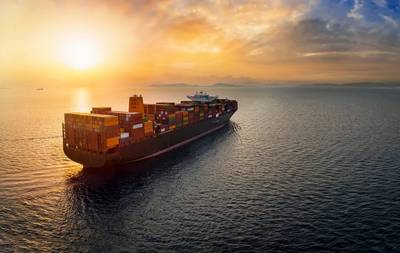Global Container Freight Still Stalled
Global industrial production and containerised freight flows remained in the doldrums at the start of the third quarter, confounding predictions earlier in the year for a strong rebound.
Manufacturers and distributors in North America and Europe were struggling to reduce excess inventories after the post-pandemic rotation from goods to services spending.
Rising interest rates and a cost-of-living squeeze have also dampened expenditure on expensive long-lived durable items.
Global industrial output was up by less than 1% in the second quarter of 2023 from the same period in 2022, according to the Netherlands Bureau for Economic Policy Analysis (CPB).
Such slow growth has been associated in the past with cycle-ending recessions or pronounced mid-cycle slowdowns (“World trade monitor”, CPB, August 25).
The volume of world trade was actually down by almost 2% compared with the same period a year earlier, a retreat that has always been associated in the past with outright recession.
As a result, global growth is entirely dependent on the services sector as consumers boost spending on travel, tourism and other personal services in reaction to the lockdowns of 2020-2022.
The commodities side of the economy is stuck in the doldrums as households pare back pandemic-era spending on products and businesses try to clear excess stocks.
In the United States, the volume of container trade handled through the nine largest ports in July was the lowest for the time of year since 2017.
The volume of container freight hauled on the major railroads in June was the lowest for the time of year since 2012.
Road freight has held up better than rail but it was still down by almost 1% in June compared with a year earlier.
In Japan, the volume of freight handled through Narita airport in the first seven months as a whole was the lowest for over a decade, with the exception of the pandemic’s first wave in 2020.
In the United Kingdom, freight through Heathrow airport had fallen in the first seven months to the lowest since 2007 with the exception of the pandemic in 2020 and the recession in 2009.
Air freight is considerably more expensive than ground shipping so it is used only for high-value items and when speed is a priority.
But with inventories high throughout the supply chain there is no urgency for deliveries and air cargo carriers have struggled to compete.
Surface freight volumes appear to be growing a bit more in Asia, boosted by China’s re-opening after particularly severe lockdown restrictions and devastating exit wave from the epidemic.
Container trade through the port of Singapore, a major transshipment point for the region, has climbed to record levels.
Throughput hit 3.43 million twenty-foot equivalent units (TEUs) in July 2023 up from 3.29 million in July 2022 and 3.24 million in July 2019.
In other parts of Asia, the picture is more mixed. China’s coastal ports handled 23.7 million TEUs in July 2023 up by less than 2% from 23.3 million a year earlier.
But the country’s internal freight carried by road, rail, air and river shipping reached a record 2,016 billion tonne-kilometres in July up by more than 7% from 1,881 billion a year ago.
South Korea’s KOSPI-100 equity index, which is a good proxy for trends in global trade, given its high-weighting of exported-oriented firms, has been up year-on-year since June.
Rising share prices would be consistent with an improving outlook for global trade, but the evidence for it so far is limited.
Globally, industrial activity and freight still seem to be flatlining after the merchandise-led boom associated with the pandemic gives way to a services-led post-pandemic period.
The worst of the freight downturn between the middle of 2022 and the start of 2023 appears to be over, but there is no sign of a significant recovery.
(Reuters - John Kemp is a Reuters market analyst. The views expressed are his own.)

















